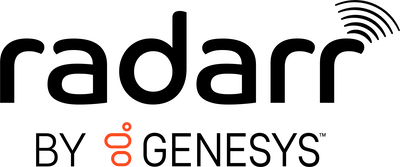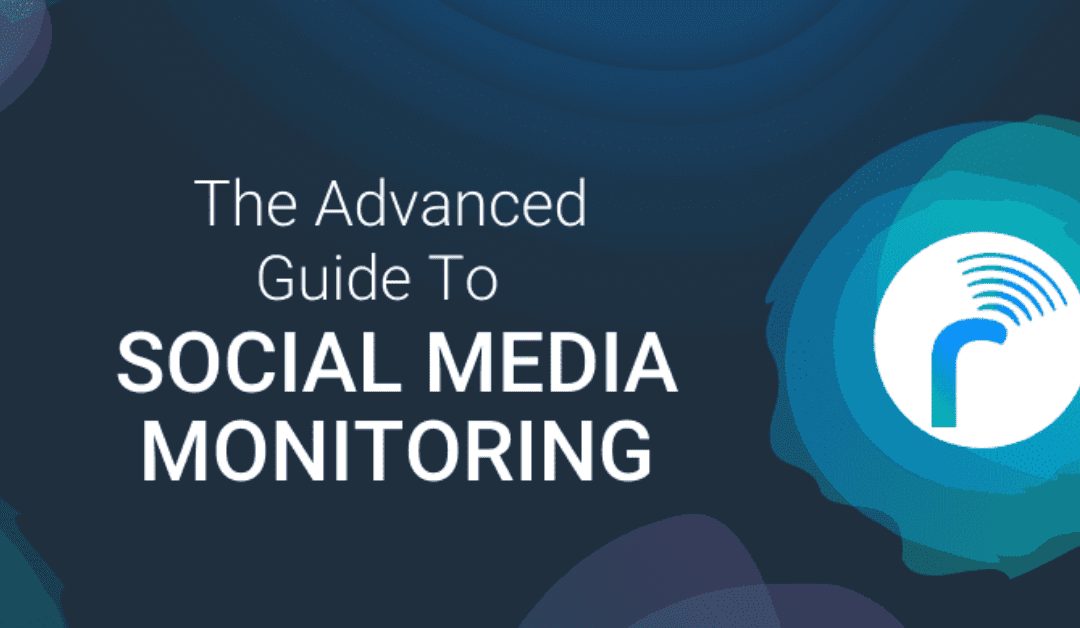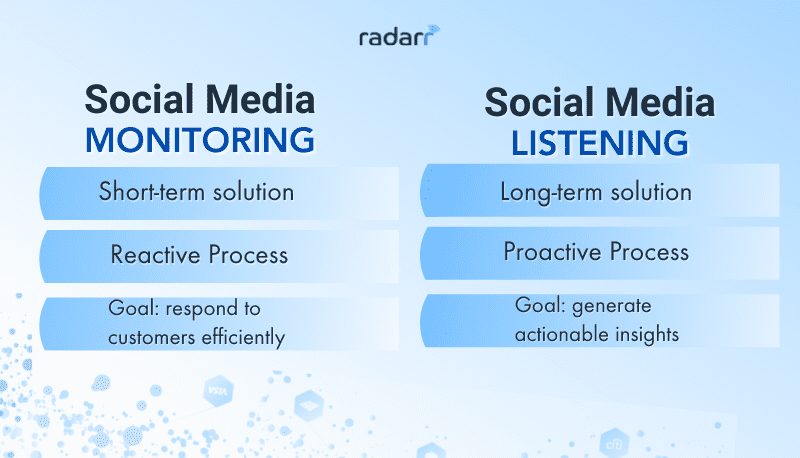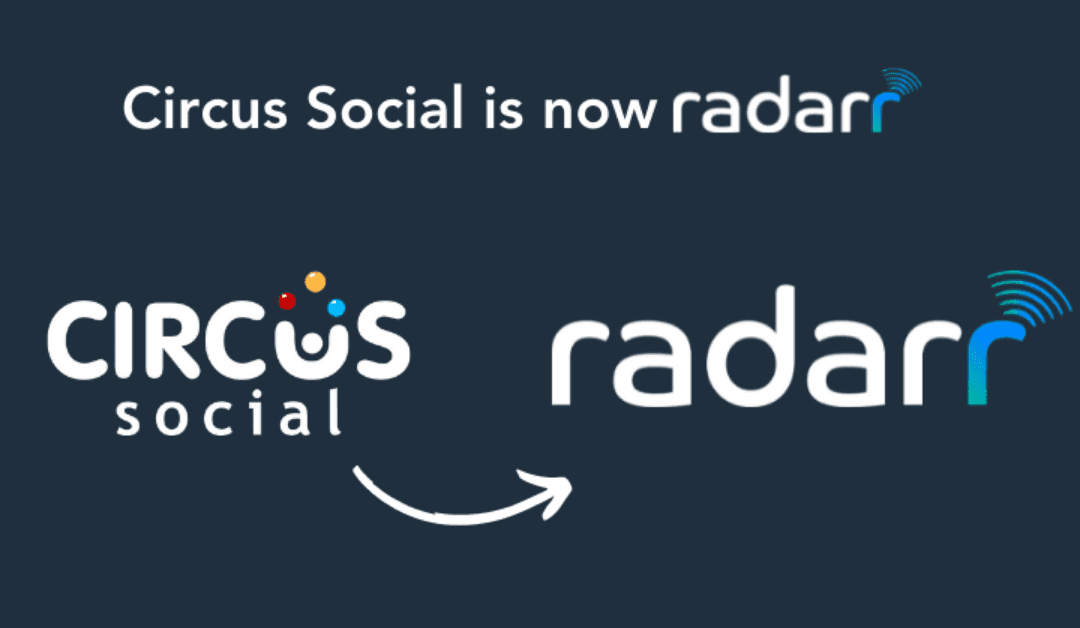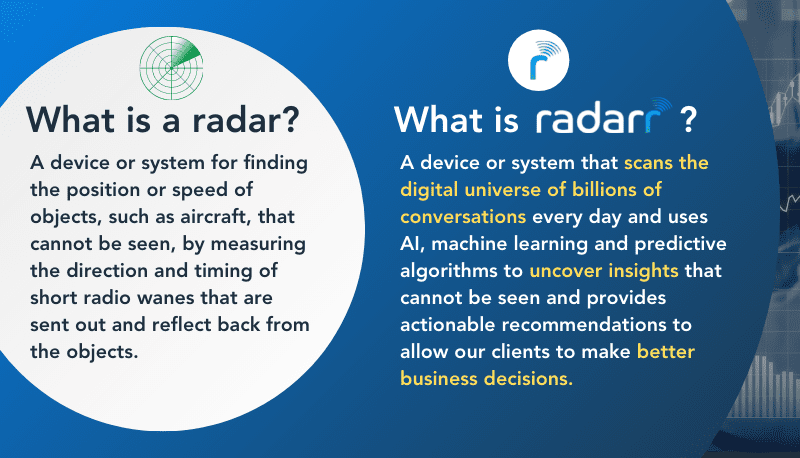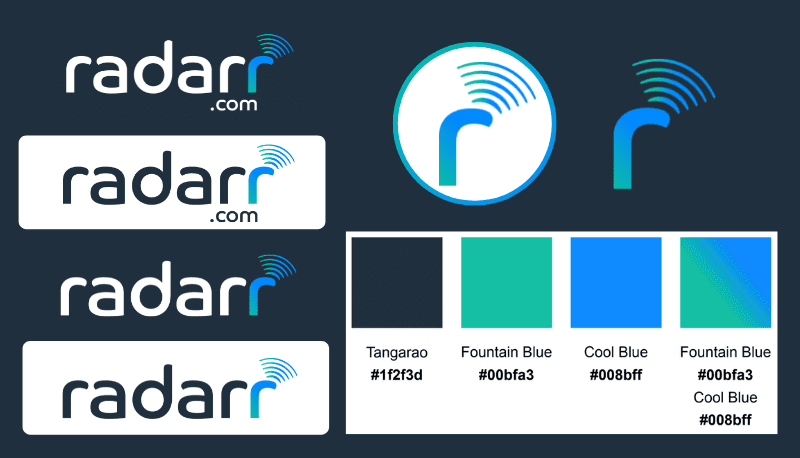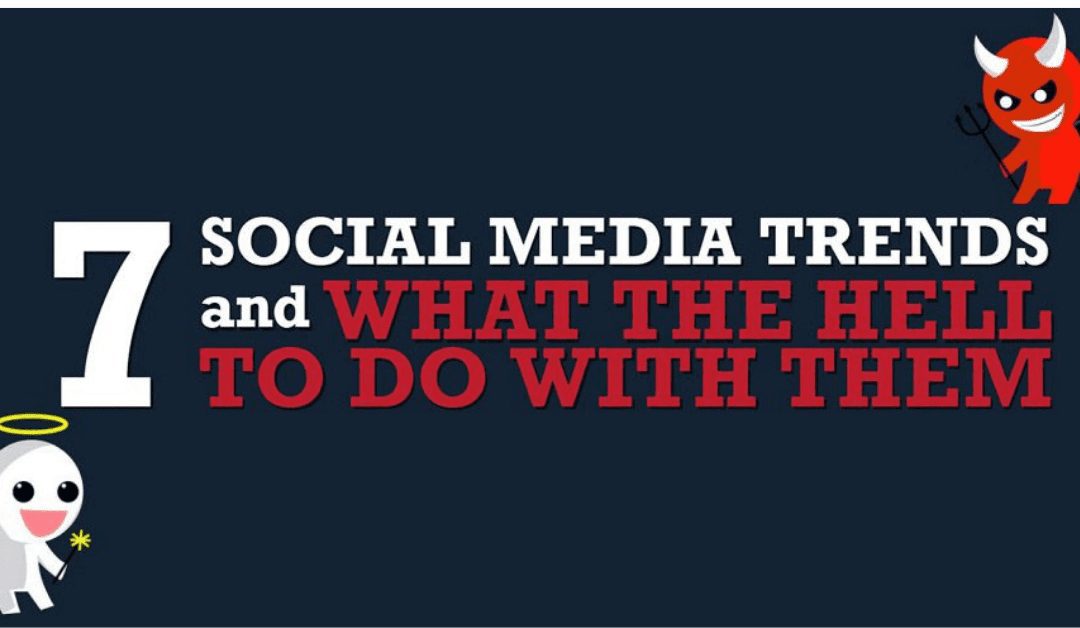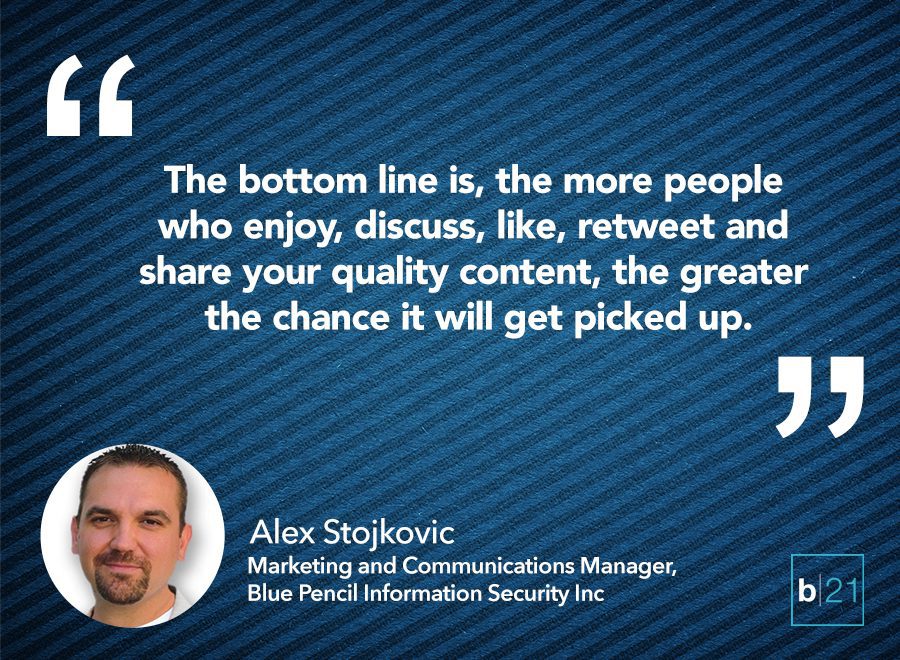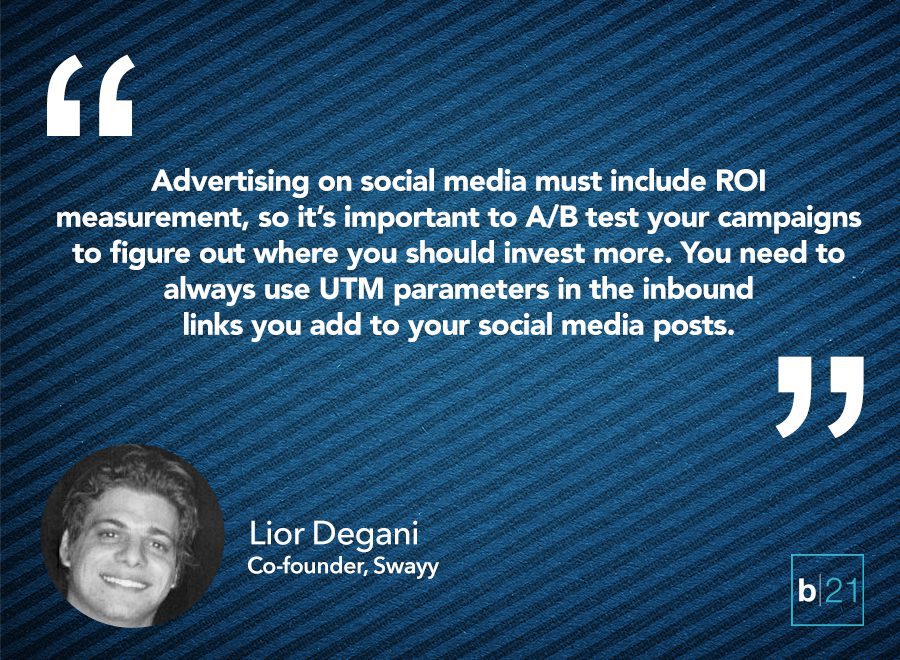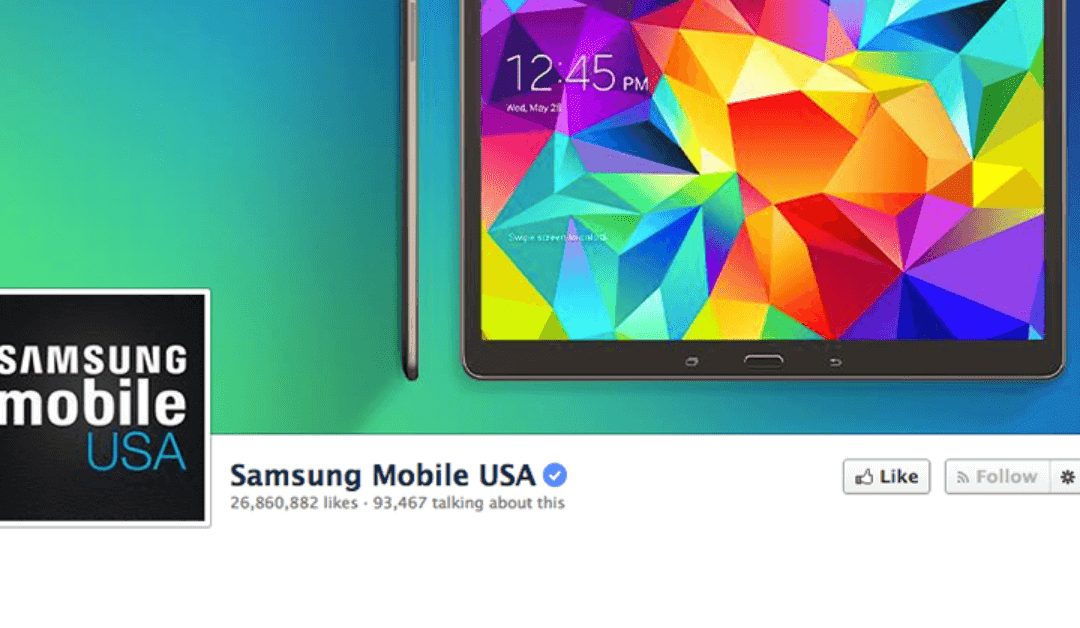
Measure What Matters: The Ultimate Guide To Social Media Analytics
If I asked you to guess about how many people around the world are active on social media channels such as Facebook, LinkedIn, Twitter, Quora, and the likes? What would be your closest guess?
Given the ways of the world, you can be sure that you could not have guessed that more than 4 billion humans currently make use of social media platforms for leisure, networking, work, and beyond.
So, it really is not hard to say that given the scale of how vast the number is, brands would want to be active on social media as well, just to not miss an opportunity to make their business benefit off of it.
Savvy businesses like so many out there (yours could be the next one, congrats on being here) use social media marketing and analytics to market, sell, upsell, cross sell, provide support, and more to their target audiences, as well as their customers. Moreover, it is also used to build and nurture these relationships with not just their customers, but also their prospects.
However, the most important aspect of this is to understand really well what kind of social media content does the best, and on what platforms is one supposed to have the maximum impact and results, and so on. Doing this will allow you to consistently up your social media marketing game and create a positive impact to your bottom line in a sustainable, yet fast paced manner.
So, how do you actually go about achieving this? Well, among other things, the most critical aspect is social media analytics and reporting. Let’s dive deep into the art, science and everything else on the top in the next few sections.
What is social media analytics and tracking?
When it comes to your brand, do you happen to have a straightforward way to identify social media trends that are relevant to your industry or vertical?
Do you have a way to clearly attribute and quantify the kind of return on investment that your brand is getting in with each campaign or post you do across your various social media channels?
Do you know what people who are followers of your brand expect and want from your social media channels? How is the content that you create perceived in comparison of your competition?
These are only some of the many questions one could ask to understand the most important question about your social media marketing and analytics, and that is: is it even working? What social media analytics actually does is help you answer all of the questions above, and more!
Social media analytics and tracking refers to the process of analyzing the various metrics associated with your brand’s social media, in order to understand how you have been performing, what you could do better, what needs immediate fixing, what you should double down on, and so on.
And for the longest time, if there is one truth that all marketers have heralded and sweared by, it is that without measuring and analyzing your social media content and its performance over time, you would not be able to improve the results, or worse, even put in your results in the proper context requisite to understand how good or bad they are.
What social media marketers really need is an insight-led path to know where to go from one place to another, and what to do from there, and so on. According to a study commissioned by the tech giant Google through research firm Forrester, no more than 40% of all firms surveyed had unified cross-platform analytics for their social media efforts, so they really don’t have a full view of what is happening there, along with its significance on various aspects such as their app and web properties.
That’s more than half of all marketers in the world that now lack the context essential to reach their core goal. In the rest of this guide, we are going to deep dive into everything about social media marketing and tracking with an assumption that as a reader, you are onboard with it being fundamental to your content marketing success. Let’s get started, then, shall we?
Why should I use social media analytics?
Although there are a plethora of reasons why you should deploy social media analytics for your business, there are some that are more essential than others. Below, we have tried to list down the major use cases that you will be able to take home for your business if you do invest in a social media analytics tool.
You can consider the following four parameters as the top benefits that social media analytics provides to your business. But keep in mind, even if they are not super relevant to your business, there might be some others that would have a better impact for you. So, the goal is not to get disheartened or disinterested in the potential of social media analytics, rather, to embrace its potential.
1. Measure and prove marketing return on investment and overall impact
The toughest part of any marketer’s job is to be able to calculate and justify the return on investment that her efforts are producing. And, in a nutshell, the bottom line to social media marketing analytics is that they give marketers rich, and transparent feedback about how their campaigns are performing across the social media channels and properties that they own, helping them to revise the strategy on the go. It goes without saying that keeping a close look on the performance KPIs is crucial to the success of your social media marketing efforts.
What’s more? Social media analytics will be able to tell you if one aspect of your strategy is not working as you had hoped it would, or even if the entire thing needs to be relooked at, so you can make the changes necessary before all hell breaks loose and the CMO is calling you at 9 am on a Monday morning.
Doing this also allows the C-suite, or about anyone in your org, to keep a tab on the most crucial data points and evaluate the marketing performance in a jiffy, so that everyone is on the same page and working from the same source of truth when it comes to data.
It’s only logical to try to get deep into understanding if the time, money, and efforts you are investing in your social media marketing plan (for example, let us consider paid promotion for a gated led-gen asset) and bringing in the moolah to justify its cost, in any way whatsoever.
In a 2021 Hootsuite social trends survey, 85 percent of the organizations that integrated data from their social media into other systems expected to be able to justify their returns on investments. And you can too!
2. Make stronger strategic and business decisions for your company
When you have better insights from the better social media analytics you have been tracking for your business, the product, marketing, sales, and all other functions in your business and their teams will be able to figure out what is working and what is not working, especially when it comes to social media and your content marketing campaigns.
However, it does not end just there as insights from your social media analytics will help you take crucial strategic and business decisions outside of just the social media aspect of it.
And every passing year, this becomes more and more true with the increase in the amount of data that is being collected and analyzed all across the world. Here are some of the ways in which social media can help you take strategic, crucial, and other business decisions:
- Catch up with and respond to trends and other things in a time-bound way – by accessing data in real time, you can predict what might go viral and what might end up being just a dud.
- Let your performance KPIs lead you into the light and show you the path to take decisions that might affect your business performance in the long run by keeping a tab on what is happening across the globe.
You do not need us to tell you that when it comes to your business, data should always be your guiding light, not intuition, and definitely not emotions. So social media analytics help you take the guesswork out of the ordinary and help you focus on what really matters, in the process, also enabling you to save time, effort, and everything else.
3. Compare your business’s social media performance against your peers
Let’s just say, if your competitor did better than you, and you did better than you had expected, is there any logic to celebrating this? Would you really consider this a win for your brand? Most definitely not.
So, if you have no idea how your competitors are performing, whether their performance is better than you, or worse, and if so, then by how much, then you really are just shooting in the dark and hoping that something sticks. In this pure vanity metrics fashion of how things have become, there is no bearing of any of this on real success.
However, with social media analytics and tracking, you can not only compare your business’s social media performance against your peers, but also gain the context required to understand the reasoning behind the occurrence of things such as good or bad performance. It gives you the oh so ever essential relevance and context that you require to really measure your company’s success on social media across the web.
You can call this way of leading the path with data as benchmarking your social media performance, and its importance can not be stressed enough. We are quite sure you would agree with that too.
4. Track your marketing teams’ productivity and efficiency
Another not so apparent but quite valuable benefit of social media analytics is that it helps you streamline the workflows in your marketing team, and there is no surprise how important those are for you to run your crew effectively.
With social media analytics and tracking, you can keep a tab on your team’s efficiency, productivity, and velocity, which is in turn quite essential for you to take them in the right direction. If you keep working in the wrong direction, it does not matter how fast you are going because you will not go far.
Some areas where it becomes all the more essential are nascent things like community management, customer service where a good tool will allow you to actualize the key performance indicators such as response time and audience’s pulse.
Key areas to use social media analytics
Many a marketing teams have got no clue about the possible avenues of their social media marketing strategy that can benefit from making use of social media analytics and tracking, which is why we wanted to bring you the top use cases which social media analytics will help you solve for your business:
Audience analytics
For a marketer, everything begins with the audience and its behavior. It is crucial for you as a brand to know exactly who your target audience is, and everything you can possibly collect on them. What it does is, help you build a useful, human-centric social media marketing strategy that helps you cultivate relationships with your community down the funnel-like a hot knife to butter.
According to a Gartner survey, in 2021, more than 60% of all customer experience transformation projects will involve some or the other form of techn. Hence, having the right tools to conduct the right analysis becomes all the more important for your business (but more on all that later, in detail, in the corresponding section).
Over the past couple of years, thanks to advancements in the marketing technology software as a service space and the uproar of artificial intelligence has enabled marketers to easily understand in-depth, a lot of context and insight into their audience, their behavior, likes and dislikes, demographic, psychometric, and other forms of data points.
It’s only safe to say that it will become even better as more and more innovation continues to disrupt the marketing domain, but till then, what we have already is laden with so much potential that the world is a marketer’s oyster when it comes to doing great audience analysis for their social media marketing strategy.
Performance analytics
Another area that social media analytics can help you with is measuring how your strategy has been performing. Doing so is key to bringing in good return on investment, and identify what parts of your strategy needs fixing.
Over the past year or so, businesses have significantly increased their social media marketing budget (all thanks to Covid forcing the pivot to an online first world), and according to some reports, there has been a 56% year over year increase in spending on FB and Instagram combined.
It is only natural for you to expect the return on investment from your social media marketing efforts, especially if you have invested heavily in it. But, you do not actually need to get granular at a very early stage, you do not need to know the number of people who retweeted, reacted, or commented on your social media posts. Only looking at a high level, bigger trends would do for you, and here are some of those that you need to be able to track:
Here are the key performance metrics to track for your social media marketing strategy:
- Month on month trend of engagement across your campaigns and posts to figure out if the content you have been publishing is actually working or not
- Number of interactions for every 1000 followers you have to gauge how active your community is
- Click through rate on your posts to learn how effectively you’re able to drive footfall from social to web and other digital media properties
- Follower growth over time on your social media channels
It is super critical to track and monitor all these data points over a period of time to spot any bigger trends that are emerging, understand your brand’s social media strategy, and identify the return on investment you are acquiring from yours.
Competitive analytics
As we discussed earlier if your business had a fantabulous year and the best results ever, but if your peers in the industry had an even better one, would you be celebrating? Or wanting to reassess your win and what you could have done better? It’s obvious to assume that anyone would be doing the latter.
In order to get a clearer comprehension of your performance and all other metrics, you definitely would like to look at them from a competitive lens, and that’s where competitive analytics through social media comes to your rescue.
Almost each and every c-level marketing or other executive is curious to make their organizations better in two key areas: effectiveness (producing the desired results against their goals) and efficiency (reducing the wasted efforts and resources through their execution), but more often than not, they have no clue by how much they do need to improve. For them, the best way to analyze their business’s performance and to understand the actionable requirements is to do benchmarking.
In its simplest terms, benchmarking refers to the comparison of your brand’s social media marketing performance against your competitors to assess your team’s work and strategy effectiveness. What it does is enable your team to learn if your performance and return on marketing investment are successful in relation to that of the bigger market.
It’s easy for businesses to ignore doing this, but there’s one thing they should know, even if they are not doing competitive analysis for whatever reasons, some or all of their competitors probably are, and reaping the results as well.
Paid social analytics
Although the last year of last decade, the first of the Coronavirus pandemic, 2020, was certainly an uncertain time for humanity and marketing budgets, research shows that digital spending increased a lot by the end of the year all thanks to businesses adopting a digital-first approach. A Gartner survey found that 60% of marketers expected customer experience and related budgets to increase in 2020, and so they did.
On paid social media marketing, a hell of lot of money is being spent, so it becomes absolutely imperative that brands know the worth of putting in the effort and spending money on running ads for their brand, demand gen, and other purposes. They need to know that every dollar or rupee they are spending is going to bring in the best possible results, and it can not be done without having a solid view of how their paid social media has been doing.
Enter paid social media analytics, which makes it all too easy for you to know what content is going to perform the best with your audience, so you can promote the same and cut your costs.
Customer service and community management analytics
Forrester, the market research company, reports that digital customer support and service interactions are going to increase by a whopping 40% in the year 2021. So in terms of the increased footfall and overall tractions, a business simply can’t turn a blind eye to the potential of a well-oiled social media customer service crew.
This is why as a social media manager or an executive, you need to make sure that your people-facing teams are doing a great job taking care of all the requests that come their way from your prospects and customers. But if you are wondering, how in the world would that be possible without taking too much of your efforts and resources, this is exactly where customer support, service, and community management analytics step into your rescue.
Consumers today expect to be catered to in a timely, fast, relevant, and contextual manner, with one survey pointing that most of them expect for a business they reached out to on a social media platform such as Facebook to reply to them within 30 minutes. 30! That’s how quick and agile your teams need to be. But guess what was the average time a business took to reply to a customer on Facebook? A whopping one hour and fifty-six minutes!
Thus, by monitoring your people-facing crews’ performance and relevant metrics and data points, you can make sure that your brand communication is valuable and agile. This, in turn, translates to an enhanced brand image and stronger, lasting, and deeper relationships with your customers and prospects.
Influencer analytics
Influencer marketing is a big part of social media today, and it is only going to get bigger and bigger as people turn to organic reviews and needs for most of their consumerism, if not all. And it is in no way a cheap affair, prices can go as far as anything when it comes to influencers showing their influence and bringing you business, so it becomes imperative to partner with the ones that can give you great return on investment.
However, when it comes to measuring it, are you well equipped with your existing social media analytics tool? Or would you require one which supports measurement across platforms such as TikTok, Snapchat, and the likes?
Your social media analytics platform should be able to support you in this venture and ace your influencer marketing game. Tracking your influencers’ key performance indicators (KPIs) will help you make the right decision and make the most of your influencer marketing efforts.
What social media metrics should I track for my business?
When it comes to social media marketing and analytics, almost each and every social media platform out there provide their in-built, native analytics for marketers and executives to deep-dive into. For example, Facebook will give you an insights tab on your business profile. Twitter, on the other hand will provide you Twitter Analytics if you navigate to the respective tab. On Instagram and Pinterest, you will need business accounts to be able to see your channels’ performance and data.
Once you have figured out how to view the analytics in each of your platforms, or are using a tool for the same (again, more on that in the next section in depth), you will need to set goals for your social media marketing’s efforts. But narrowing this down in a sea of options can be quite an intimidating task, which is why the rest of this section is all about the different metrics you need to be looking at and tracking for your brand’s social media marketing efforts.
In social media marketing, and otherwise in business as well, all metrics have meaning. It is only about the context which matters when you are looking at them. While we have listed all the possible metrics you could be monitoring for your social media marketing efforts, it makes better sense to make a mental note of the ones you would be zeroing in on before you kickstart your new strategy or make modifications or alterations to the existing one. Anyway, without any further ado, let us look at the first set of these metrics:
Engagement metrics: Likes, comments, shares, clicks, and more
Engagement for your social media analytics and tracking is a huge category to track. Why? It includes a ton of data points to consider, from likes, comments, shares, reactions, clicks, to whatnot.
At its basic, the engagement rate for any social media channel you use tells you how actively your audience is interacting with or getting involved with the content, posts, and campaigns that you initiate on your properties. Audiences that are well engaged usually like, or comment on your social media posts.
And engagement is not just how much your audience is getting to respond to your content, but also how often they do that matters even more, or equally, at the very least. Every social media network out there, even the newer ones for that matter, will have some sort of engagement metric that is a sum total of the smaller engagement activities such as likes, comments, and shares. Many platforms, such as Twitter and Reddit, have more than one type of metric, or different naming conventions, such as Retweets vs. Shares for Twitter and Facebook respectively.
If you have a high engagement rate on your social media channels, it means you have a healthy relationship with your audience and have real followers that would be readily available to do business with you, while also interacting with the media or content you share with them. But on a much more granular level, there are other such metrics that would not hurt if looked at, here are those:
- Likes, Comments, Retweets, and more: Individual engagement metrics like a Share or a Retweet add up. In a Twitter report, you’ll see a total number of engagements per post or profile.
- Post engagement rate for every channel: This is defined as the number of engagements divided by impressions or reach for each channel. A high rate means the people who see the post find it interesting enough to engage with.
- Account mentions on your social media: Organic mentions, like @mentions that aren’t part of a reply, or tagging a brand in an Instagram story or even on Twitter without prompting, indicate good brand awareness and results in higher customer lifetime value for your business.
Like any other set of data points, looking at just engagement alone will not give you all the context required to be able to make strong decisions for your social media marketing strategy. What you would need is a combination of metrics that give you a great way to learn what levers you need to pull in order to reach or achieve the goals you have set out for your brand.
Awareness metrics for your social media: Impressions, reach, and more
Now, these are one set of metrics that are used very, very often, but often end up confusing the user as to what is referring to what. Although very useful, they mostly come in hand if your goals for your social media marketing are focused around brand awareness, perception, and the sorts. This is why it is important to understand the difference between the two:
At the level of a post on a social media channel, say Twitter, impression would refer to how many times the said post appears in someone’s timeline or newsfeed. However, reach refers to the potential number of unique visitors the same post could have (roughly calculated by adding your follower count and following of accounts that shared the post)
Return on investment (ROI) metrics for social media: Referrals, conversions, clickthroughs, and more
Now these set of metrics are most relevant for companies that have a shop set up, either on their Instagram accounts, their website, Facebook, or elsewhere. Social referral traffic and conversions from your social media are both tied to your marketing and revenue goals, and ultimately impact your topline. So these could be the most important set of metrics for some businesses (although, come to think of it, it would be the most important set of metrics for most e-Comm businesses)
To track these set of metrics, what you will essentially need is a publishing strategy that incorporates urchin tracking module, or UTM and a website traffic analytics program such as Google Analytics, Kiss metrics or a native one if you’re on an e-Comm platform such as Shopify.
- Referrals are how a user lands on your site. In web analytics, you’ll see them broken down into traffic sources. “Social” is usually the source/medium you’ll be monitoring, and then it’s broken down by each network.
- Conversions is when someone purchases something from your site. A social conversion means they visited via a social media channel and then purchased something in that same session or visit.
Hand in hand with referrals and conversions is the clickthrough rate (CTR) in your social media ads and posts. CTRs compare the number of times someone clicks on your content, to the number of impressions you get (that is, how many times the ad was viewed by the user). Higher the CTR, better the ad, and vice versa, obviously.
Customer care social media marketing metrics: Response rate & time
In the above sections, we have talked a lot about performance of your social media marketing efforts and strategy, and not so much about the customers’ experience that is associated with it. That is indeed very highly tied to your brand, right?
Moreover, what about your own personal and your team’s performance? Who is going to look over your social media marketing manager to make sure they are taking care of their responsibilities well and delivering the return on investment from their compensation?
This is where metrics associated with customer care, such as response rate, response time, resolution time, and the likes come in to help you figure out exactly what it is. They help you figure out the stuff that’s happening behind the scenes at your customer service and support crews.
How does social media analytics work?
As we have been discussing in the sections above, most of all social media platforms come with their own integrated analytics that you can access from the native platforms respectively. However, initially in your social media marketing journey, this might even be doable, but as you scale, you would want a solution to help you do all of it at once.
How social media analytics work is, you pick and choose a social media analytics and tracking platform that works for your business (to decide which one to choose, simply skip to the next section). And then, you basically just route in all your social media channels’ content management and scheduling through it. Rest, the platform and its advanced tech is responsible for doing so.
Now, at the cost of sounding salesy, we would like to pitch how Radarr could be your social media analytics platform of choice, so let’s get talking about it.
How to put your social media analytics to use?
Now that you have understood about the types of tool you could use for your social media analytics, here is what you need to do: get to the most important bit. In this section, we will make a deep dive into how you can put your social media analytics tool and strategy to use, to be able to generate great results for your business. Think of the following five steps as a part of your social media analytics strategy or roadmap, and follow them to the T.
1. Set SMART (acronym) social media analytics goals, right off the bat
Have you heard of the acronym S M A R T? It refers to Specific, Measurable, Attainable, Relevant, and Time Bound, in the context of your business goals. The first step that you need to follow is to create and set these SMART goals to help you achieve the social media analytics targets you wanted for your brand. By doing thus, you will be able to focus on your social media marketing strategy in a much better way and reach or even exceed your expectations in an efficient manner.
In order to get started with this process, you need to ask yourself the following question: “What do I really want to learn from my social media analytics that are at my disposal?” Then, and only then, will you be able to get to the next step into each part of the S M A R T goal we discussed above. Let us look at an example which will help you tremendously:
- Specific goal: I would like to use my social media analytics to identify specific data points related to my marketing tactics, in order to determine which posts and campaigns are working best in reaching and engaging our audience.
- Measurable: I want to be able to point out some specific and relevant data points to achieve this goal.
- Attainable: I will work to identify three specific data points from my list of data points to help accomplish this goal.
- Relevant: These data points will help my team and I measure our success in reaching and engaging our audience across our social media properties, as well as help us identify any gaps or areas of improvement in our overarching social media strategy.
- Time-bound: I want to identify these specific data points over the course of the next 30 days — this way, in a matter of just four week’s time, we can begin using them to measure our success in reaching and engaging audience across social channels and identify the loopholes and gaps and areas for improvement that exist in our social media strategy.
2. Choose the metrics you are going to zero in on to track
Once you are done with step 1 discussed above, it is time for you to decide which of all the plethora of social media metrics that you have are you going to track for your business. You can also consider tracking the most popular or commonly tracked social media metrics by brands and businesses around the globe, but that would not take you very far.
Some metrics may vary by the social media platform you are looking at due to the simple reason of relevance and context. But for your utmost convenience, we have put together a list of some of the most popular metrics applicable to virtually every social channel and analytics tool you would be making use of to get started.
- Reach is the total number of people who have seen your content on a social media channel
- Engagement refers to all interactions including shares, likes, and comments, and more, on other platforms, depending on the platform
- Impressions are the number of times or content is displayed on someone’s feed or timeline
- Mentions are the times your business and brand are referenced on social media by your audience, prospects, or customers, or even another business
- Social ROI provides insight into whether the investment you’ve put into your social media marketing is resulting in an increase or decrease in customers, sales, brand awareness, customer loyalty, and other key performance indicators (KPIs)
- Likes are when an audience member taps (or double taps) on your social content to show they appreciated or liked it
- Retweets/shares/reposts are when your audience members post the content your business published on their profiles as a repeat posting
3. Determine and try (or buy) the social media analytics tools you’ll use for your brand
Once the above two steps are thoroughly done with, you have to make the hard choice of picking up the social media analytics tool most suited for your business. But thanks to your good fortune of having read the previous section, you are fully equipped with the know how of what different features are being offered by different tools out there. In case you are confused between two or more tools, it would be a good idea to either ask for a customized demo from the vendor, or better, take them out for a spin through a free trial.
Before making a decision regarding which tool or tools you’ll use, here are some questions you would want to think about:
- Do you want a tool or software to help you manage your social media analytics across multiple channels and platforms (e.g. Twitter, Facebook, LinkedIn, Reddit, etc) or just one (e.g. Twitter)?
- Which metrics did you decide you’re going to track and monitor (as we touched on in the above step)?
- What is the maximum budget you can shell dough out for when buying the tool? Do you need a tool with flexible pricing options and features that you can add to or remove from over time, or not? (To find this information, review the pricing pages like this page on Radarr’s website.)
- Which tools and software options are suited to help you achieve the S M A R T goals you set up?
- Do you want your tool to integrate with the tech stack and other bunch of software your team uses to run your business (such as Salesforce’s CRM, for example)? Did you know that Radarr is the best alternative to Salesforce Social Studio?
4. Measure the success of your social media analytics strategy through the above steps
Once you have your social media analytics software set up, you will be able to measure the success of your efforts and hard work, with ease, and with accuracy. To be able to do this, you may use the analytics software you executed — although depending on your software, you might have the ability to create a customized report and other relevant dashboards or pull the specific details about data points you and your team care the most about.
In addition to applying your tools to help measure your success, you may also consider your answers to the following questions:
- Did you achieve your S M A R T goals?
- Did the metrics you chose to focus on tell a story that’s helpful for your brand?
- Did the software or tool you implemented support your business needs in the best way possible?
With answers to these, you may be able to easily complete this step and get to the final one, check below.
5. Make necessary social media analytics adjustments
Upon completing all the previous steps, you shall be able to gauge what parts of your strategy are working, and which ones are not working, at all. Your mandate now is to only make the improvements, and help your brand evolve their social media marketing strategy into a stronger one.
Social media analytics tools: Which one should I get?
Okay, there is, quite literally, and we are really not exaggerating, a plethora of social media marketing and analytics software’s out there.
From enterprise grade to easy to use, you have an entire set of categories defined and ruled by several of them, so choosing the one which is the most appropriate for a business is nothing less than a task.
You should ideally answer the following questions before getting yourself a social media analytics tool:
- What are your objectives of using the tool?
- What is your current budget for the social media analytics tool?
- Which teams are dependent on the tool?
- Does the social media analytics tool allow team collaboration?
- Does the tool offer set up and customer support?
- Is the user interface and visualisation understandable? (IMP!)
- What are the integrations it covers?
- What is the level of agility and scalability it offers?
- What are other businesses like yours saying about it?
- What other goals will it help you accomplish?
For example, Radarr is an award winning AI-Powered social and digital data analytics and big data platform company that specializes in social listening, research and digital monitoring.
We work with businesses to help them make decisions from relevant social media conversations in real time. This includes conversations about brands, products, campaigns and competitors. Several mid to large sized businesses including Fortune 500 clients across Asia Pacific use our social media analytics platform to keep track of their performance and growth across all channels.
Apart from social media analytics, Radarr also has the capability to cater to the following functions for you:
- Social media monitoring
- Social media listening
- Media monitoring
- Sentiment analysis
Kickstart your social media analytics journey today with Radarr
Now that we have reached the end of this guide, it’s safe to say that social media marketing analytics are both an art and a science. All you need to be able to succeed with yours is a well defined roadmap, clarity on what your business needs are, and the patience to see all this through as you make adjustments to your growth strategy.
Data can get overwhelming for most; especially when you’re getting started.
That’s why we built Radarr.
Radarr not just brings all your data on to one dashboard, but makes analytics consumable with smart visualization to get clear actionable. Take charge of your campaigns, performance and budgets with data on your side!
It’s time to sign up on Radarr.
If you’re new to social media analytics, read this article. we also have a course designed to help you master numbers.
Here is the complete guide of Marketing analytics and Why it is important?
